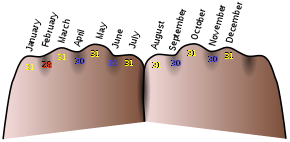6.1 Background
"Clearly, specifying these operations in binary code is a pain. A natural solution is using an agreed-upon equivalent symbolic syntax, say, “load R3,7”. The load operation code is sometimes called a mnemonic, which in Latin means a pattern of letters designed to help with remembering something."
Examples of popular mnemonics that come to mind:
Kingdom, Phylum, Class, Order, Family, Genus, Species.
King Phillip Cried Out “For Goodness Sakes!”
There's also using knuckles of both hands to help remember which months have 31 days and which ones have 28 or 30 days.

What is the pattern of letters "load, R3, 7" to help us remember? The binary code? I doubt that.
I can see that "load, R3, 7" is symbolic, but I can't see how it is mnemonic.